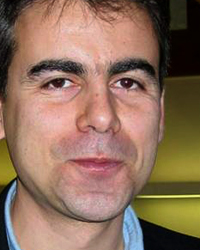
|
|
ASTRONOMY : SPARSITY AND ASTRONOMICAL DATA ANALYSIS 
Jean-Luc Starck Senior scientist, Service d’Astrophysique, CEA-Saclay, France. Location: Gold Hall Date & Time: Tuesday, September 13, 09:00-10:00 Abstract: Wavelets have been very successfull for many astronomical applications such filtering, deconvolution, source detection or compression. Wavelets have however some limitations when the data present anisotropic features, and other sparse representations such as ridgelet or curvelet can also be used in some specific applications. We will first review some of the sparsity based methods which have been proposed and we will show how such approaches can be used in important spatial projects such as PLANCK or EUCLID. Speaker Biography:
J.-L. Starck has a Ph.D. from Nice Observatory and an Habilitation from University Paris XI. He was a visitor at the European Southern Observatory (ESO) in 1993, at UCLA in 2004 and at Stanford’s statistics department in 2000 and 2005. Since 1994, he is a researcher at Commission for Atomic Energy (CEA), France, where he is leader of the multiresolution project and a core team member of the Planck European Space Agency project. His research interests include image processing, statistical methods in astrophysics, and cosmology. Coauthor of four monographs on astronomical image analysis, and coeditor of ten conferences including Astronomical Data Analysis conferences, he is an expert in multiscale methods such as wavelets and curvelets. |
©2011 UCL/TELE || icip2011-webmaster@listes.uclouvain.be || Last updated September 06, 2010, at 03:01 PM